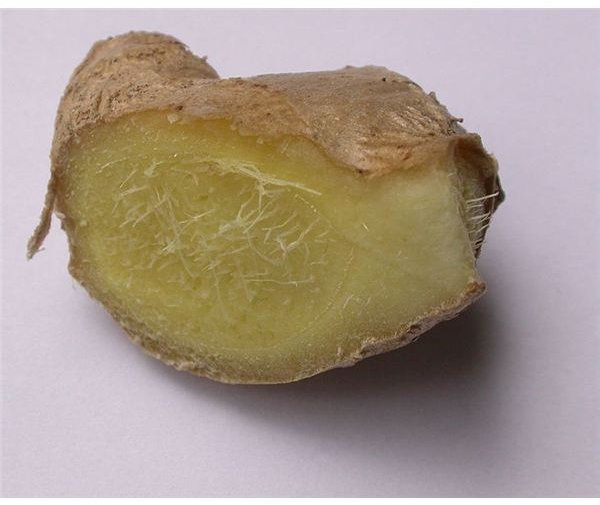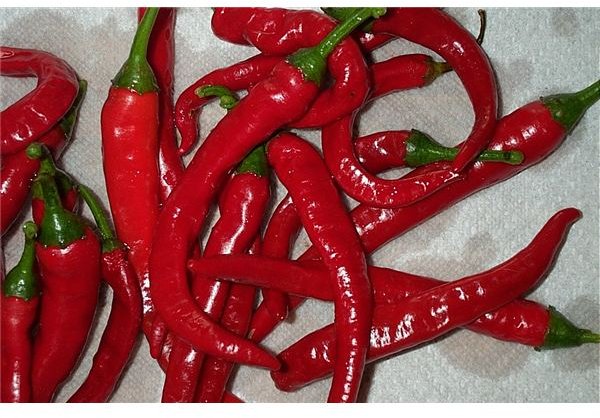The Best Herbs to Help with Circulation After a Mastectomy
After a Mastectomy
Pain, bruising and swelling are all common after a mastectomy. Depending on the stage of the cancer and the size of the tumor this surgery can involve the removal of all or most of the breast, as well as the lymph nodes that are located under the arm. These nodes, or glands, are part of the lymphatic system, which transports lymph fluid, nutrients and waste between tissue and the bloodstream. This system serves as part of the body’s immune system, helping to protect the body from foreign substances such as bacteria and viruses. After a mastectomy the lymph nodes are either affected or removed. This can lead to swelling as fluid becomes trapped. Also, without healthy circulation, it may take more time for the body to heal.
Patients are generally given a prescription for pain medication to help manage the discomfort. A healthy diet with plenty of fluids is recommended as well. Simple remedies such as the application of ice packs can be used to help reduce swelling and pain. There are also herbs to help with circulation after a mastectomy. These herbs can not only reduce the typical post-surgery problems, but they can also support the healing process be encouraging the removal of waste and the movement of nutrients to damaged tissue. Always talk to a doctor before using herbal medicine to determine if this natural remedy is right for you.
Cayenne
A potent stimulant, cayenne (Capsicum annuum) is wonderful for increasing circulation and strengthening the circulatory system. Cayenne acts quickly in the body, stimulating blood flow right away. It is also ideal for relieving the pain of a mastectomy when applied externally. Cayenne acts as a counterirritant, temporarily reducing substance P, a chemical that brings pain messages to the brain. The active ingredient in cayenne is capsaicin. It is also rich in antioxidants including flavonoids, carotenoids and vitamin C.
You can take cayenne in capsule form or mix a small amount of the powder in hot water to drink. Cayenne or capsaicin creams are available over-the-counter. You can also make a homemade remedy for pain relief. Make a paste with a small amount of cayenne powder and wintergreen oil. Apply to painful areas. Cayenne is generally safe, but it can cause stomach irritation if used in excess. It can also irritate the skin.
Prickly Ash
Prickly ash (Zanthoxylum americanum) is a circulatory stimulant and tonic for well-being. It not only improves circulation but also boosts the lymphatic system. While useful for swelling and pain, this herb does work slowly, affecting the body over time. It is considered to be generally safe, although there have been no clinical trials to support its effectiveness or to determine any side effects. Prickly ash should be avoided by pregnant women and those who have digestive problems.
Both the bark and berries are used medicinally. To make an herbal infusion from the dried bark steep 1 cup of boiling water over 1 teaspoonful of the herb for 10-15 minutes. Drink up to three cups a day. You can also take prickly ash in tincture form, no more then 2 mL, three times a day.
Ginger
Ginger (Zingiber officinale) also acts as a stimulant, increasing blood flow. The fresh root can be made into a healing herbal infusion that can help with poor circulation while also benefiting the digestive system. Powdered ginger, ground from the dried root, is also effective. Ginger is

very rich in volatile oils, including borneol and cineole. It has an overall warming effect and is considered as an overall health tonic in both traditional Chinese medicine and Western herbalism.
To make a cup of ginger tea steep 1 teaspoon of diced, fresh ginger root in 1 cup of boiling water. Let the ginger steep for five minutes before straining. Sweeten with honey if desired. You can also make an infusion with 1 teaspoon of the powder with 1 cup of boiling water. Drink throughout the day. Ginger is generally safe, but do not consume more then 4 grams per day.
You can also use ginger externally to ease pain and tenderness. Soak a clean cotton cloth in a cup of strong ginger tea. Gently apply to painful areas.
Safe Use
Always talk to your doctor before using any of these herbs to increase circulation after having a mastectomy. Especially directly after the surgery, you may be advised to avoid herbal medicine. Be sure to check for any possible contradictions with herbs and any medications you may be taking for the pain.
Aside from herbal medicine, be sure to eat a healthy, nutrient-rich diet to support the healing process. Eat lots of fresh fruits and vegetables, healthy sources of protein, nuts, seeds, legumes and grains. Drink plenty of water and fresh juices. If you notice that the pain or swelling is intense or if there are other complications after the surgery, be sure to contact your doctor for help.
References
Web Md. What are lymph nodes. https://www.webmd.com/a-to-z-guides/swollen-lymph-nodes-topic-overview
UCSF Medical Center. Mastectomy: Instructions After Surgery. https://www.ucsfhealth.org/education/mastectomy_instructions_after_surgery/.
University of Maryland Medical Center. https://www.umm.edu/altmed/articles/ginger-000246.htm
University of Maryland Medical Center. https://www.umm.edu/altmed/articles/cayenne--000230.htm
Hoffmann, David. “The Complete Illustrated Holistic Herbal: A Safe and Practical Guide to Making and Using Herbal Remedies.” (Element Books, 1996).
photo by Joeb/morguefile
photo by Snarkmaster/wiki
Disclaimer
Please read this disclaimer regarding the information contained within this article.
